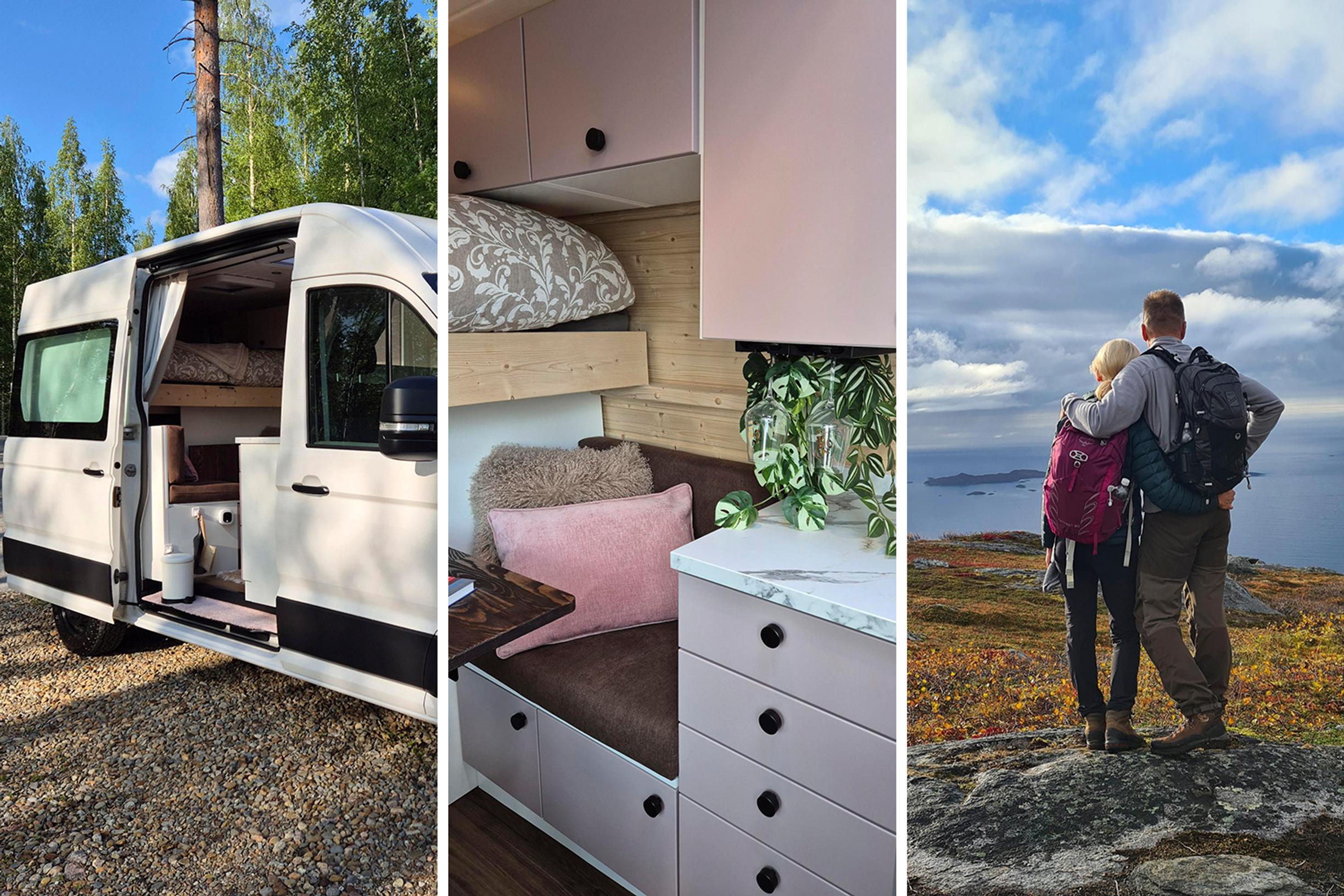
“The van went from an empty shell to a home”—a Finnish couple built the camper of their dreams
Avid hikers Tiina and Jarkko Mehtonen turned their long-held dream of owning a camper van into reality. Now Tiina shares how they converted a van into full-on camper home.
What a gorgeous camper! Tiina, what inspired you and your partner Jarkko to build your own camper van?
The idea of having our own camper van had simmered in our minds for a long time because we love hiking trips. We dreamed of the freedom to hit the road whenever we wanted, spending the night at the foot of fjords and mountains so we could set off on a day hike at dawn. When our kids were little, we had a couple of motorhomes, but over time road trips gave way to boating on Lake Saimaa. Once the kids grew up, our interest swung back to traveling by van. We rented one a couple of times, but then we were tied to specific dates that had to be booked well in advance. So we decided to get our own camper van. This time we wanted to build it ourselves so it would feel as home-like as possible.
At the start of the project we heard plenty of comments about what a huge undertaking we’d taken on. That didn’t scare us, and now we’ve received loads of praise for the result, both online and on our trips. Many people are amazed at how much storage we’ve managed to fit into such a small space.
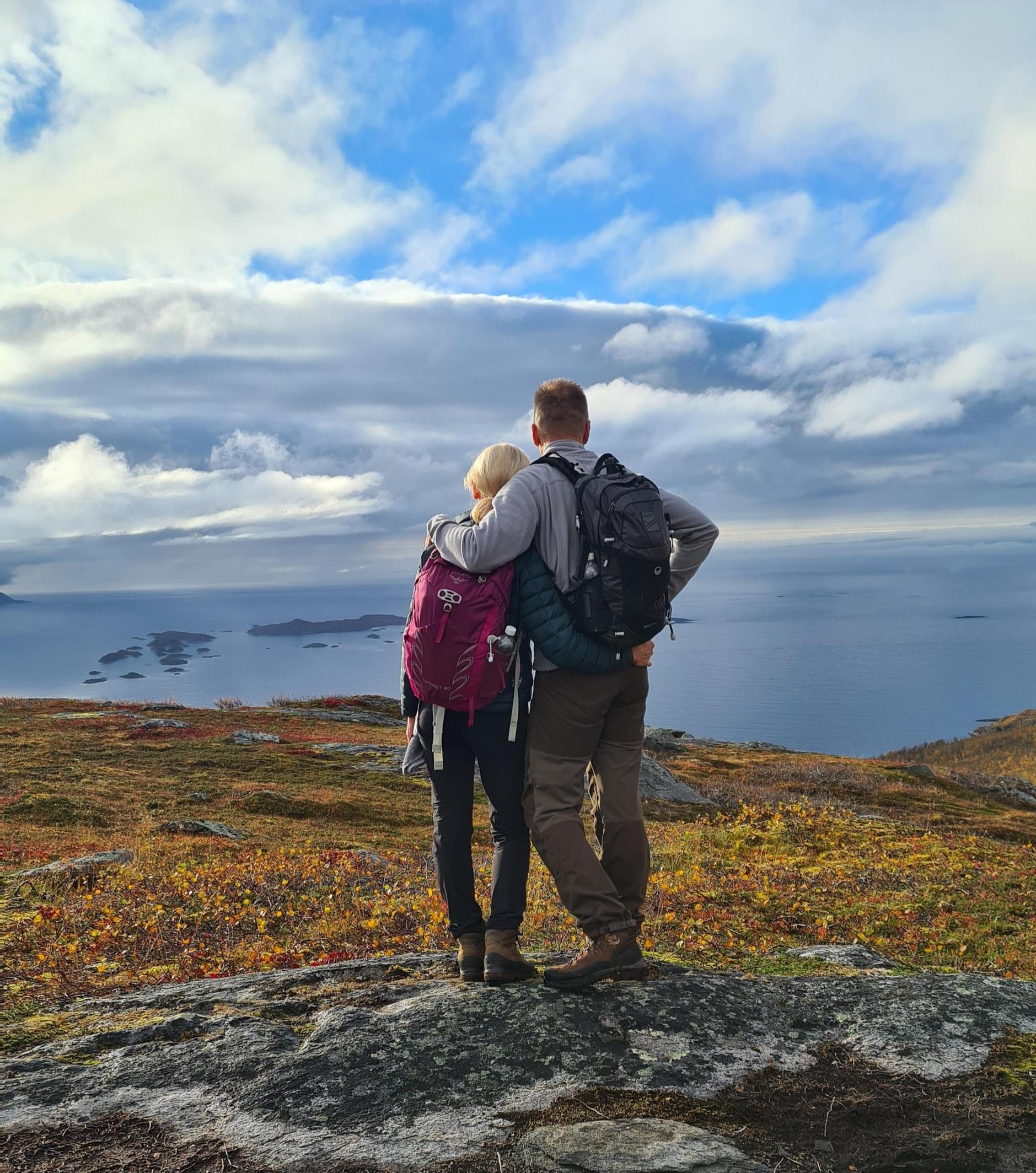
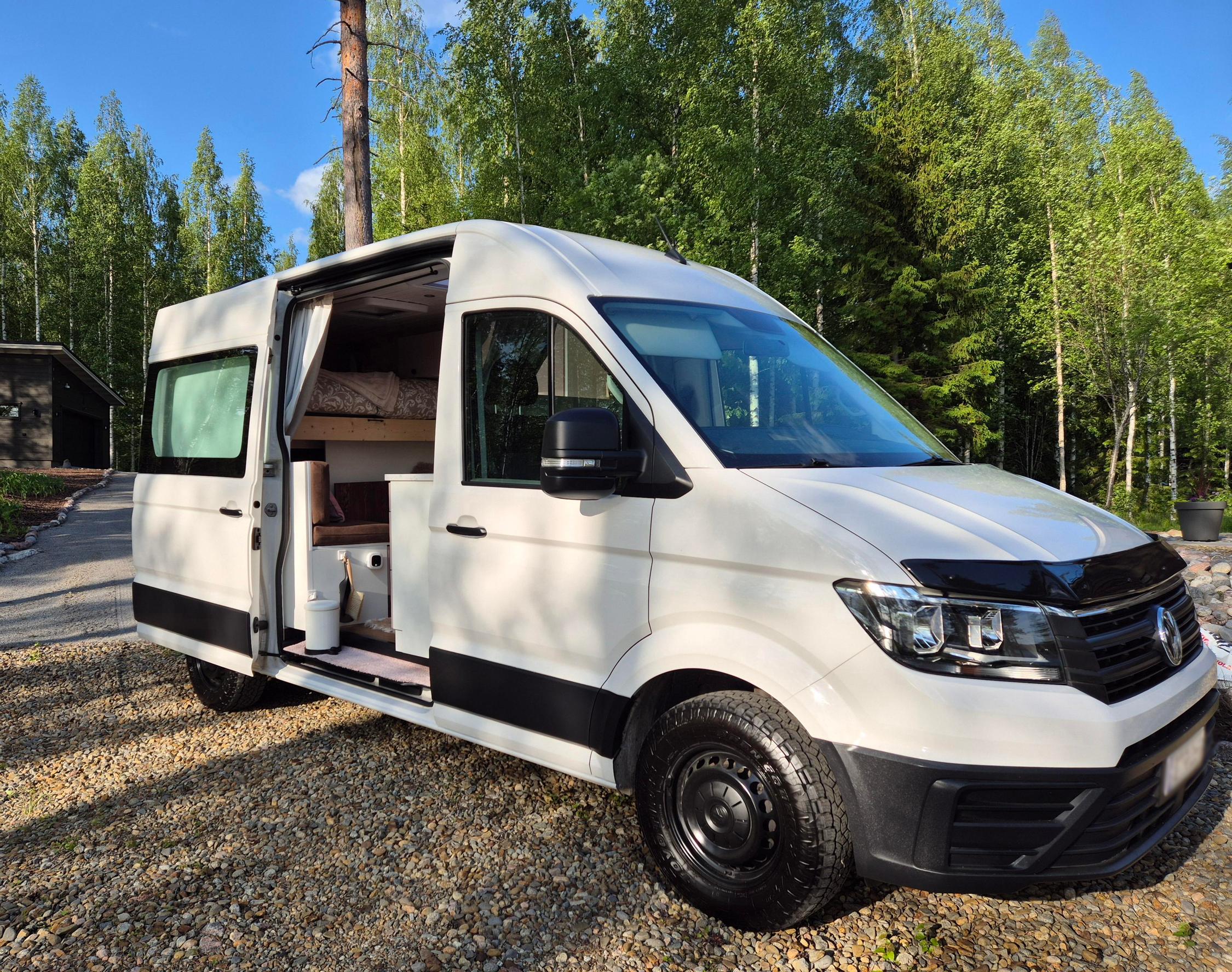
How did the planning go?
Planning was surprisingly fun but also challenging—optimizing the use of space in particular was a real puzzle. We wanted the van to include everything we needed without feeling cramped, and we still needed plenty of storage. We drew several layout versions before we found the right one.
Some of our best moments were those shared morning-coffee sessions in the autumn, sketching out the ideas that had taken shape overnight.
Getting the technical side right was important to us. Yet it was surprisingly difficult to find reliable information on things like proper insulation, moisture control, and ventilation. The internet is full of conflicting opinions.
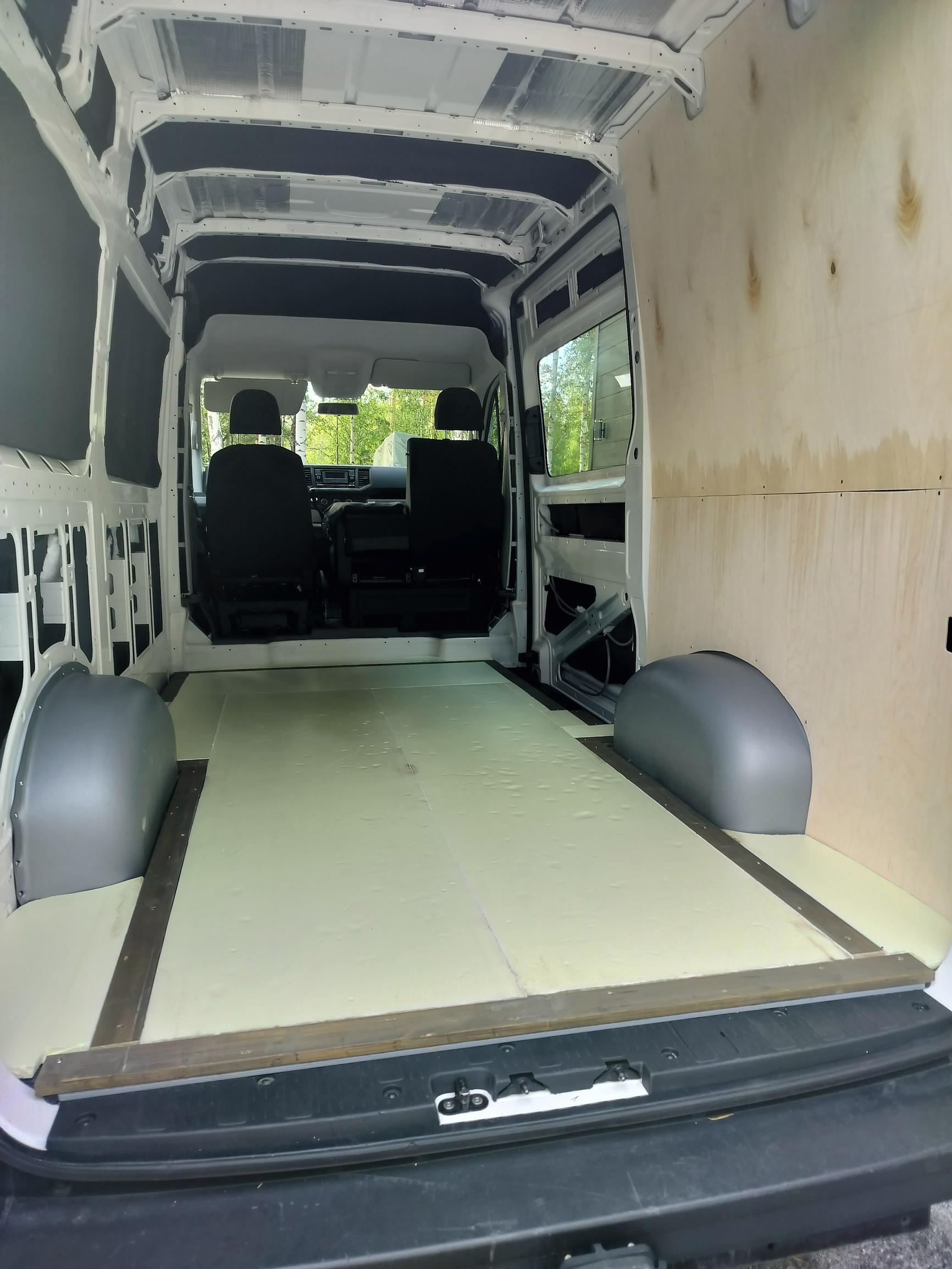
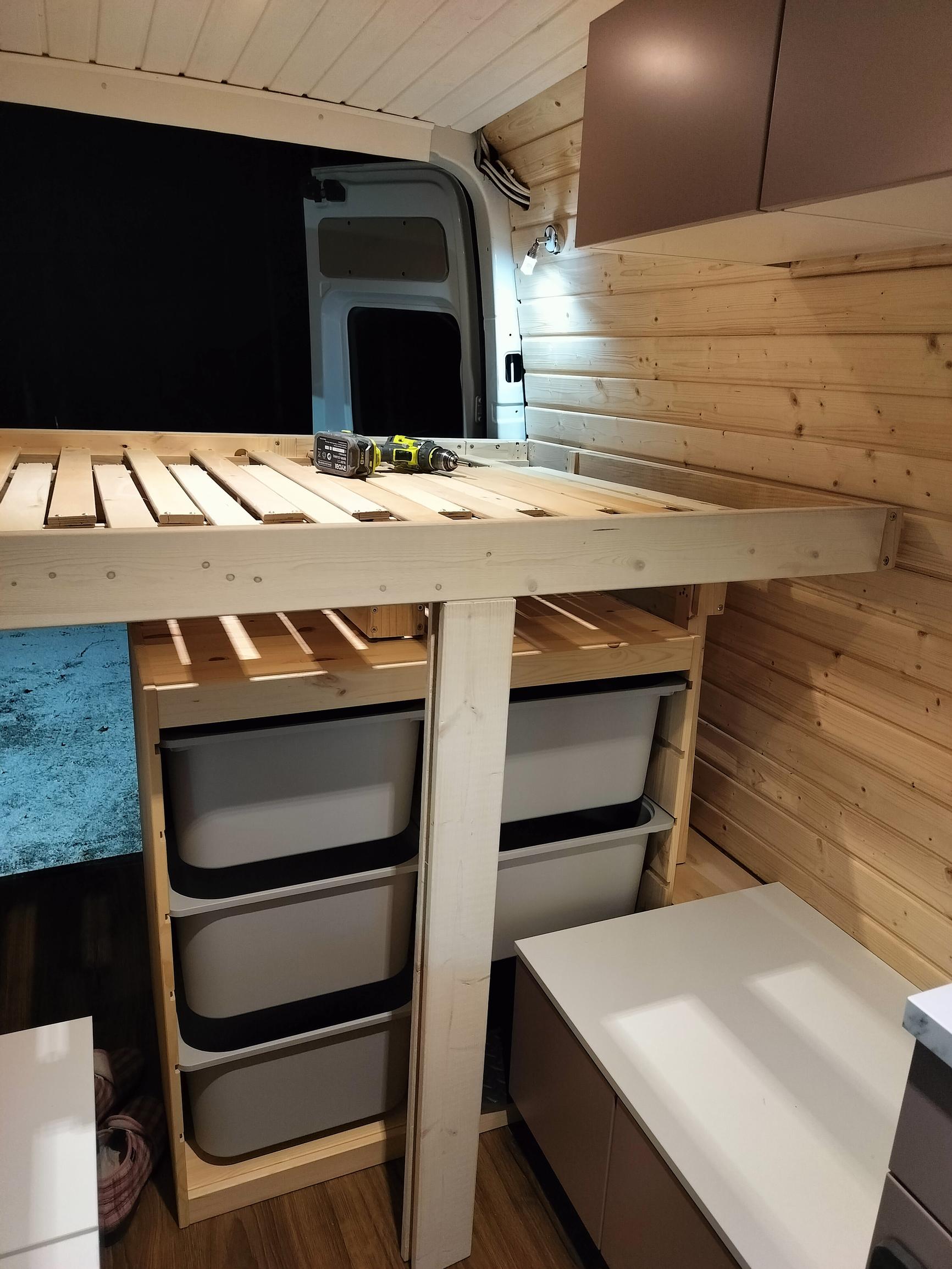
What were the main stages of the build?
First we had to choose a van with the right shape and size. Because we were investing so much effort in the build, we wanted a vehicle that would stand up to years of use. One criterion was that the mileage had to be reasonably low.
We chose a medium-length model so it would fit easily into parking spaces. That also keeps ferry fees lower and makes the van easier to handle in tight spots.
After picking the van, we stripped it out, treated the interior metal for rust, added sound and thermal insulation, and built the interior framing. Next came wiring and systems, the floor, cabinetry, and the bed. We ordered the kitchen units made to measure.
Building was so fascinating that we sometimes found ourselves still in the garage at midnight.
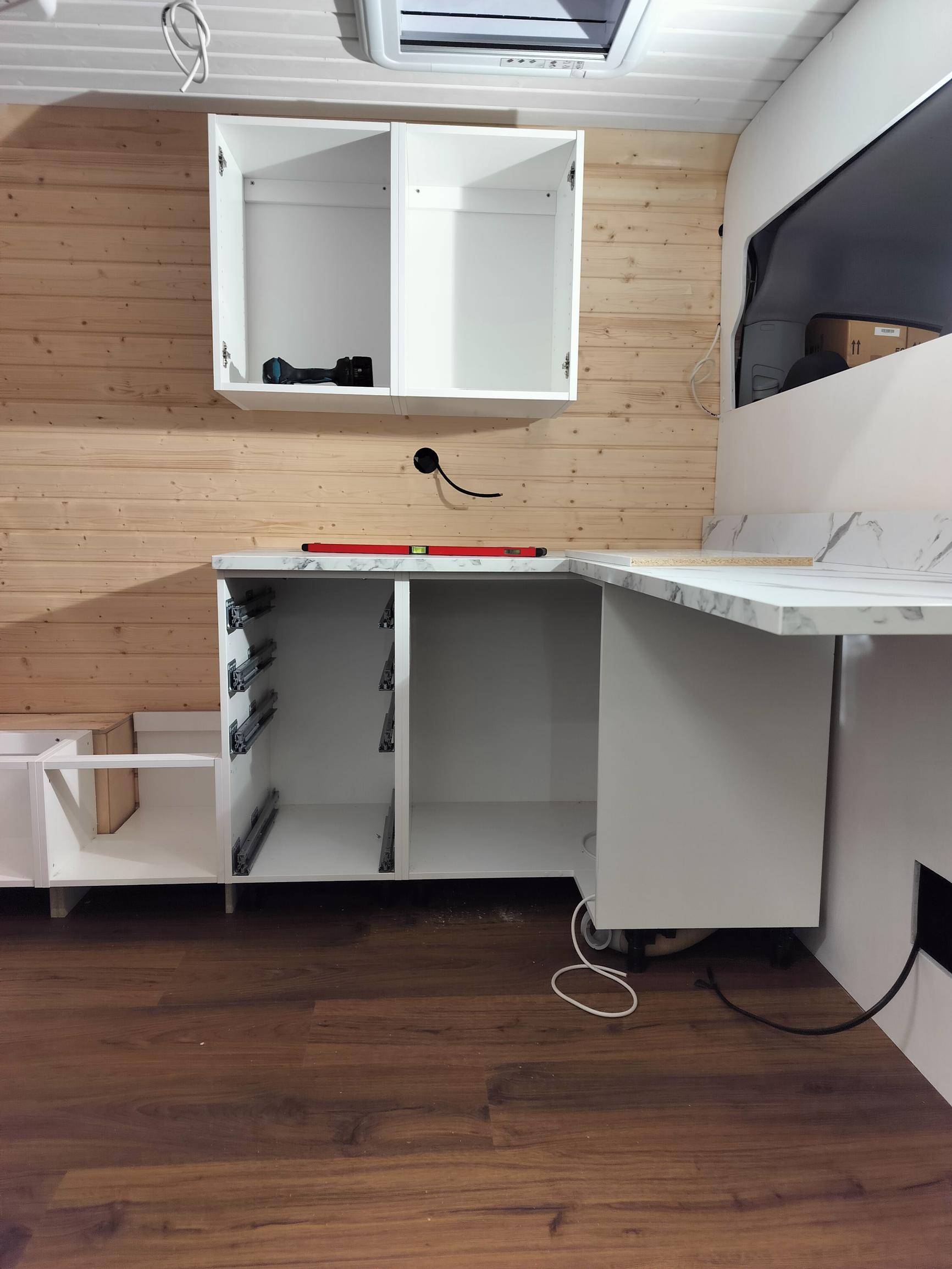
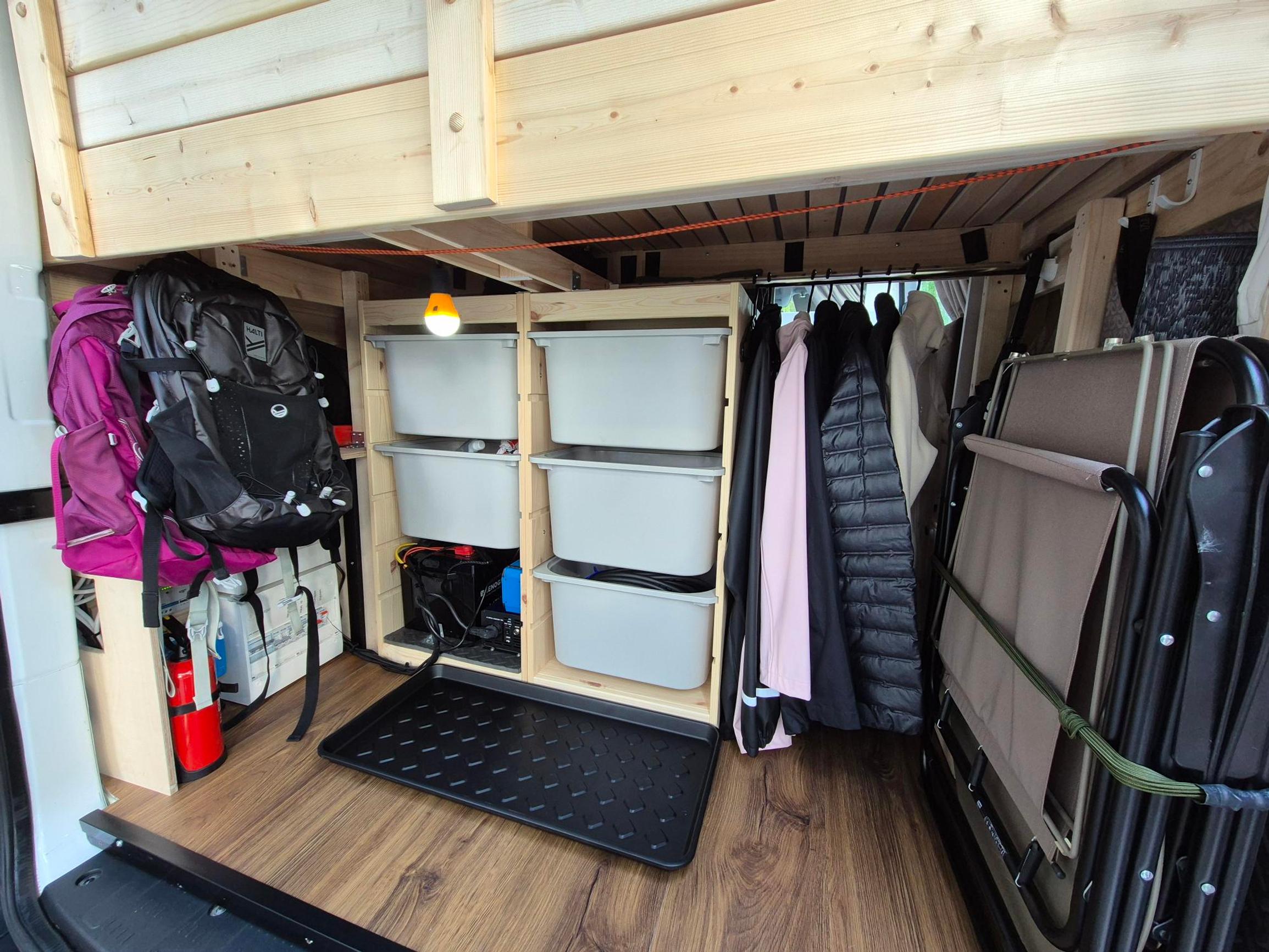
We wanted our travels to be as self-sufficient as possible, so we installed a solar panel, a lithium battery, the necessary chargers, and an inverter. That way we’re not dependent on campground hookups. The cabin is heated with a diesel air heater, and we cook on gas.
Each stage brought its own sense of accomplishment—along with the occasional puzzle. One challenge was that every corner of the van is different, which meant making countless templates.
The build took three months because we worked only evenings and weekends. It was so captivating that we often noticed it was past midnight before we stopped. The best part was watching the van transform from an empty shell into a home.
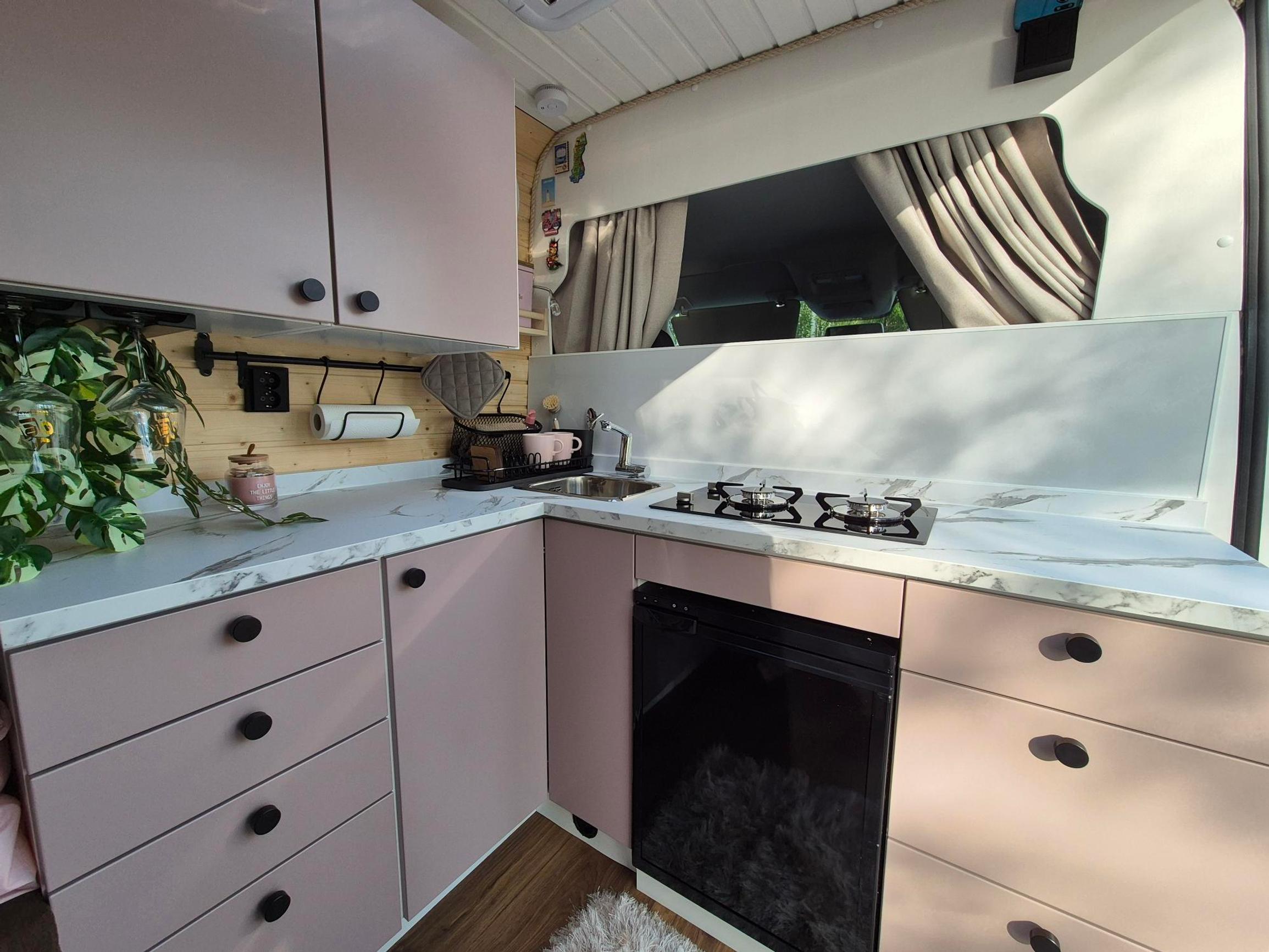
How much did the van end up costing?
The entire project cost €50,000, including the van. Doing much of the work ourselves kept expenses down. We invested in high-quality materials and safe equipment and electrical solutions. We also paid for extra rust protection to ensure the longest possible life span.
We’ve always loved traveling, but the van has given us a whole new level of freedom. Before, we had to worry about accommodation and schedules.
How did it feel to finish the camper you’d been dreaming of?
After the first trips it was a joy to see how brilliantly everything works together. Our van was finished in autumn 2024, and in April 2025 we took it on a test run to Copenhagen and then around the islands of Jutland. Since then we’ve visited Norway and Sweden.
The best thing is not having to plan every detail in advance. We can spend the night wherever we like, and even if the weather is miserable, the van is always warm and cozy. After a long hike we change out of our hiking clothes, brew coffee, and think about the next leg—or, if the scenery is stunning, we just stay put. Norway’s fjords are especially breathtaking, and of course the seashore.
We’re constantly wondering whether we could still make improvements and whether everything is as functional as it could be. We joke that at some point another project will probably appear on the horizon.
We’ve always enjoyed traveling, but the van has brought a whole new sense of freedom. Before, we had to think about lodging and timetables—now we can simply set off and see where the road takes us.
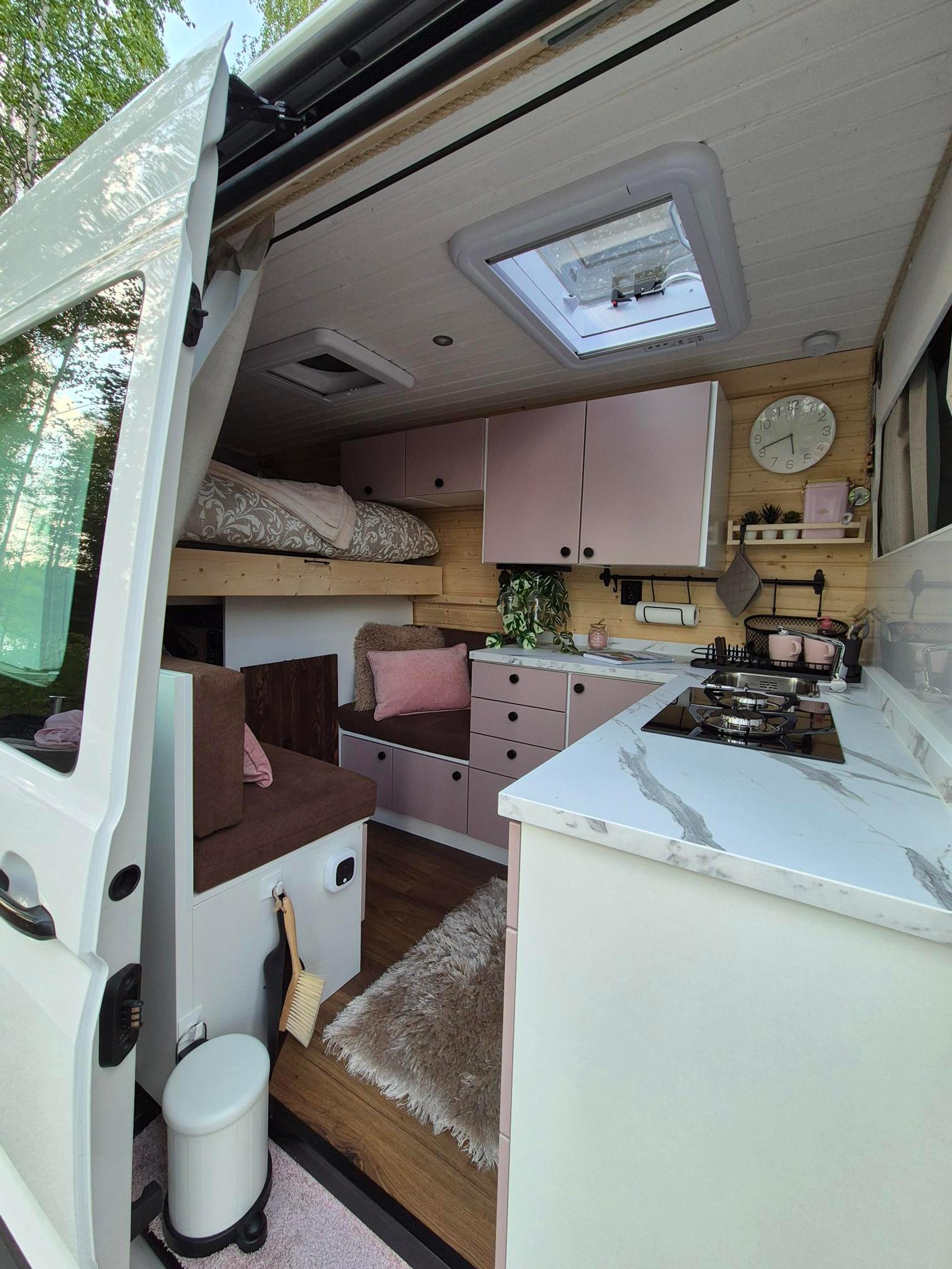
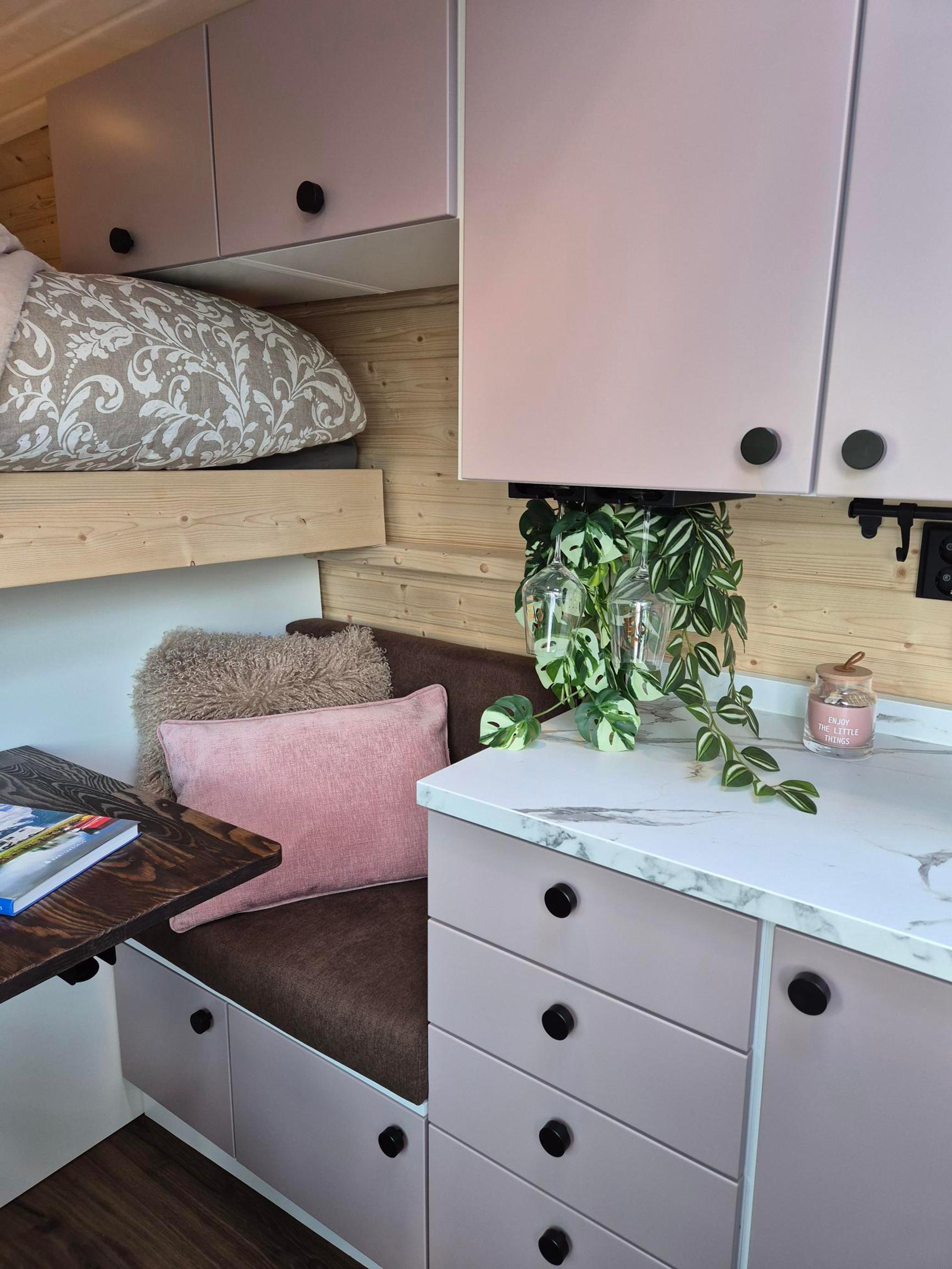
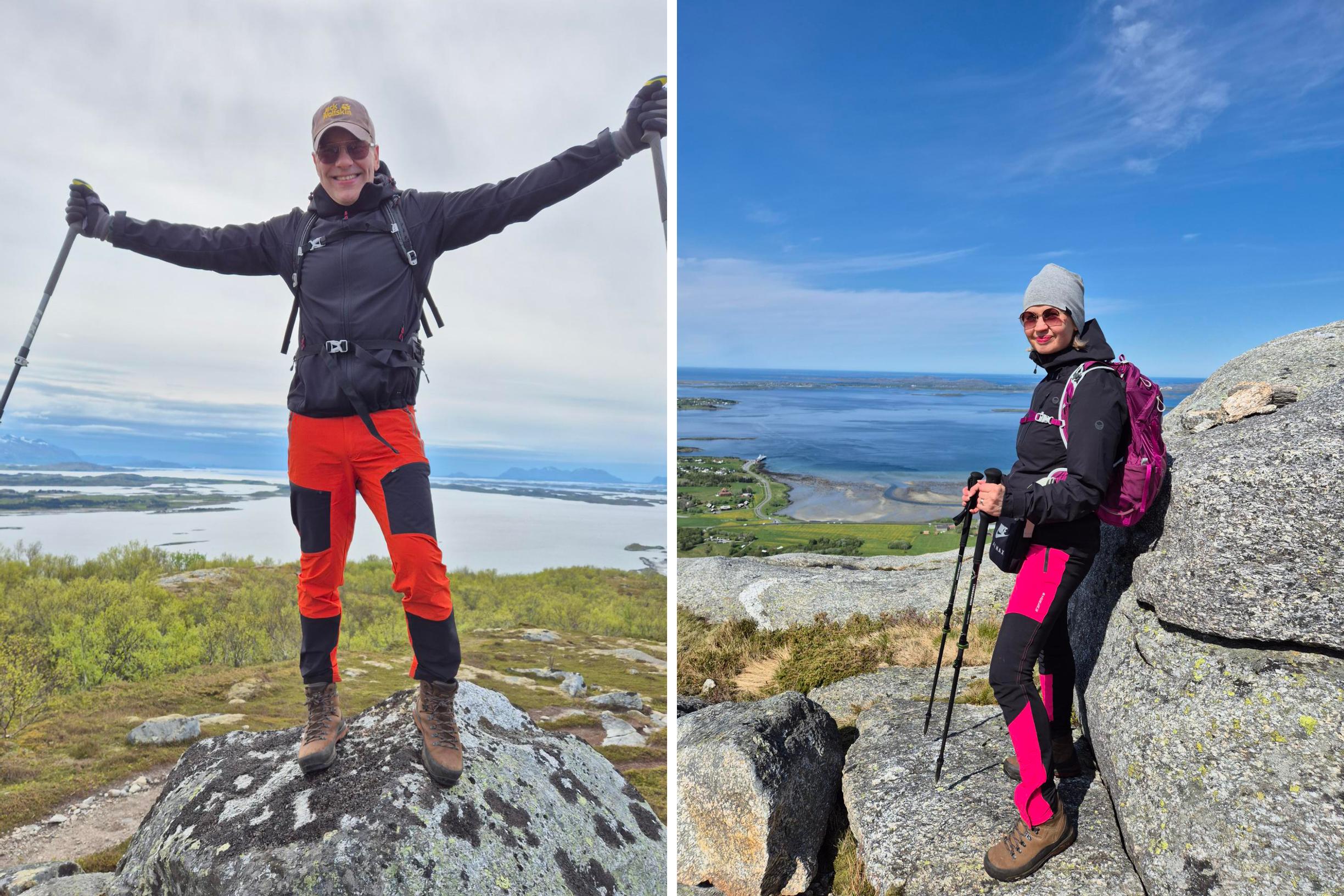
What trips are you planning next?
In Finland we’d especially like to explore Lapland, where there are plenty of great hiking destinations. The beauty of van life is how easily you can combine outdoor adventures with travel. In summer we might also drive to some festival events.
We’re also dreaming of a longer journey to Norway’s fjords and maybe even all the way through Europe to southern Spain. We want to see mountains, the sea, and small villages—and stop whenever the mood strikes.


